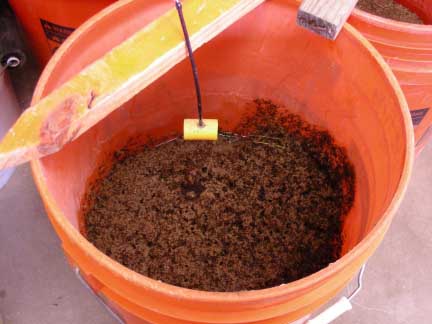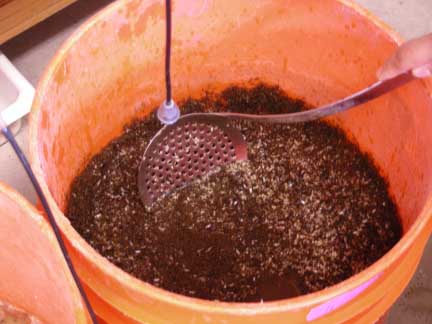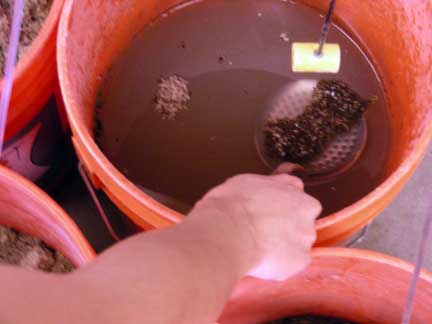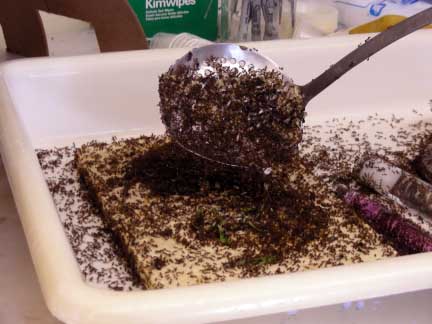LAB TOUR Part 1
The drip line
Solenopsis invicta comes from the flood plains of Argentina. When an area floods, the ants group together, interlocking legs to form a floating ball of ants and brood that is able to survive the flood and reestablish a colony when the waters recede. Staff from the UT fire ant lab dig up ant colonies and place the ants and surrounding soil in a 5-gallon bucket. They are then able to use the ant's natural flood response to separate the ants from the soil.

Water is very slowly dripped into the buckets of ants and soil to simulate slow, steady rain. As the soil becomes saturated the ants move to the top with their brood to find dry ground. When all the soil becomes saturated and the water level is above the soil line, the ants begin to float on top of the water.


A lab technician can use a slotted spoon to scoop up the ants and brood to transfer them to a tray where the colony will live during its tenure in the lab.

Go to:
Main Menu, Lab Tour intro
1. Drip line, 2. Formicary,
3. Sieving, 4. Mass Attack, 5. Rearing pupae

